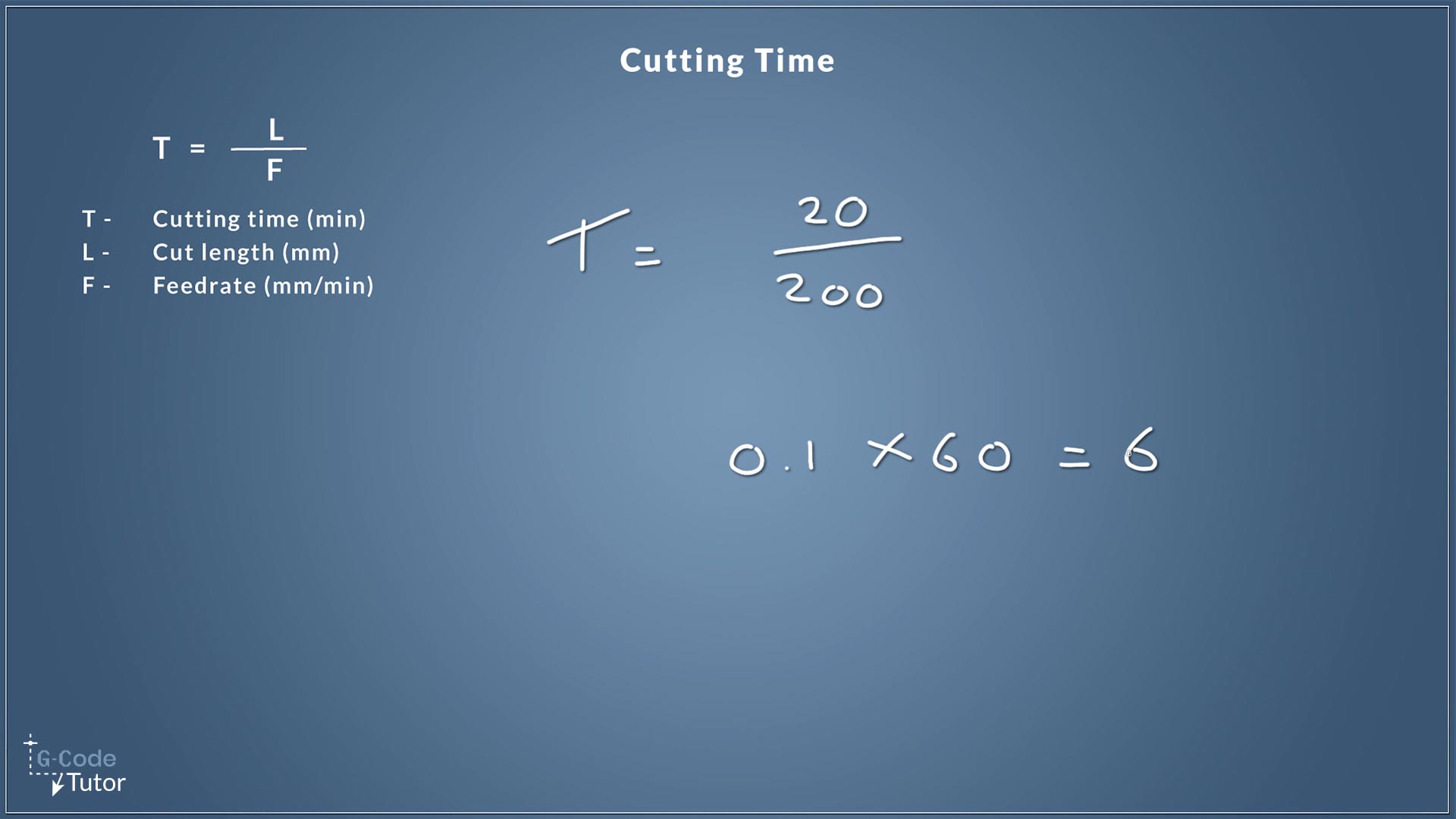Calculating Cutting Times
The above video lesson is part of a series of videos I made for Practical Machinist, available here
When machine shops were rows upon rows of manual machines, back before the time of CAD/CAM and CNC was still looked at as something that might be useful in the future. We still needed a rough run time of each part to be able to work out how much to sell the product for with a profit. Often, we need this time before the part is loaded into a machine for the first time.
The calculation is also the way your CAD/CAM software predicts how long a part will take to cut.
As part of your fully rounded machine shop education, it is important to know how to calculate cutting times, many times in my career I have been asked for a cutting time with only a G-Code program for reference.
Calculate cutting times

For this equation, it is the same if we are calculating both metric or imperial units. The cut length and feed rate puts the formula into the correct units as the only other variable is the time. Because of this, we can use the same formula for both measuring systems.
In this example, we are calculating how much time it will take to cut a 20mm length at a 200mm feed rate. This will return an answer of 0.1 mins. To convert that into seconds, we multiply by 60. As we can see, it will take 6 seconds to finish that pass.
The cutting time formula
The variables used for our equations represent the following values:
T = Cutting time This is the value of the time it takes for each cut to complete and the subject of the equation. Our answer will output to T.
L = Cut length The cut length is the distance the tool travels for each cutting pass. We can pass both metric and imperial measurements into this function without affecting the formula.
F = Feed Rate The feed rate we have the machine set to. This value, in conjunction with 'L' takes our cut length and calculates how long it will take to cut with the stated feed rate.
Cutting time maths

This example is in imperial, but it works the same way when using metric distances.
We start by adding the distance our tool will travel to the 'L' part of our formula. We can either measure this or take the distance from the G-Code G01 (G02/G03) move.
Then insert the feed rate we are using under 'F'
Divide the numerator 'L' by the denominator 'F' to give us our answer 'T'
Share this article
learn the maths needed to work in a machine shop
Machine Shop Maths course



